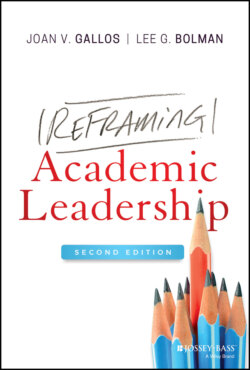Читать книгу Reframing Academic Leadership - Lee G. Bolman - Страница 20
Learning for Effective Action
ОглавлениеFrom the outside, it may seem that effective leaders have an uncanny ability to read situations quickly. Many do, but they weren't born that way. They acquired their capacity from practice and experience. Effective leaders have learned thought processes that enable them to register what is going on, reflect on it, assemble it quickly into a conscious pattern, and see the big picture. What Malcolm Gladwell (2005) calls the blink phenomenon is a learned form of rapid cognition. Kahneman and Klein (2009) remind us that there is no shortcut to developing this kind of quick judgment – it takes effort, time, practice, and feedback.
Academic leaders can develop their skills in reframing – train themselves to see their role, work, and institution more broadly and from different perspectives. By learning how to think and act in such diverse roles as institutional architect, politician, servant, coach, prophet, artist, and diplomat, academic leaders can expand their mental maps and cognitive frameworks. The images build on more than a century of theorizing about organizations and about human behavior in them, and capture much of what we know about organizations as rational systems, human enterprises, political arenas, and theaters of worklife (Bolman & Deal, 2021).
Paradoxically, learning to make quick and accurate situational diagnoses requires slowing down. When you are feeling overwhelmed by everything coming at you, slowing down is counterintuitive and hard to do. But it is vital. The next time that happens, stop and ask yourself some questions. What's happening here structurally – how do institutional rules, roles, and policies contribute? What are the people issues at play? What are the political dynamics, and who are the key constituents to consider and reach? What's the meaning of this situation and of the options to me and to significant others? With practice, the process of reframing takes on the characteristics of any well‐learned skill: quick, automatic, and largely tacit. Such skills emerge from active learning and from practice. Five strategies can help the process along. None is rocket science, but all are easier to espouse than to do well and consistently.
